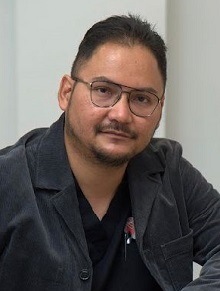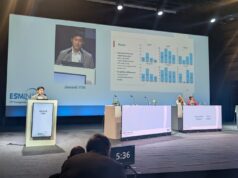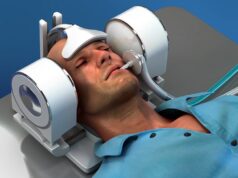
Following the publication of a case report in Topics in Magnetic Resonance Imaging, researchers from Malaysia have indicated that the use of vessel-wall imaging (VWI) “could potentially serve as an imaging method to presumptively diagnose spontaneous recanalisation in patients with acute ischaemic stroke”, although additional studies to investigate and validate this further are needed, they add.
“As spontaneous recanalisation in acute ischaemic stroke is an understudied subject, there is not much in the present literature to refer to, to better understand this phenomenon,” first author of the study, Mohamad Syafeeq Faeez Md Noh (University of Putra Malaysia, Serdang, Malaysia), told NeuroNews.
“If the utilisation of advanced VWI is possible [and it is done] when patients present with acute stroke, and they happen to have spontaneous recanalisation, it may be possible to look at the patient characteristics—underlying medical conditions that contribute to or oppose spontaneous recanalisation, and sites of occlusion [most often] associated with spontaneous recanalisation compared to sites that are not—and corroborate in a bigger sample size or study population as to the kinds of clots that are likely to recanalise spontaneously.
“Utilisation of VWI not only gives information regarding the lumen, but it also allows the interrogation of the vessel wall, to look at whether it is just inflammation of the wall or whether there is plaque that is causing the acute stroke clinically. This is a step forward compared to luminal imaging, which is limited by just visualising the lumen, and looking at whether it is patent or occluded.”
In their report, Noh and colleagues detail the case of a 66-year-old man who was referred to their centre from an outside hospital following an acute onset of syncope and suspected of having a possible middle cerebral artery (MCA) syndrome. However, despite no imaging or intravenous thrombolysis (IVT) treatment being performed at the outside hospital, the patient’s symptoms resolved within three hours after initial presentation, during transfer to their centre, with his National Institutes of Health Stroke Scale (NIHSS) score decreasing from five—on examination at the emergency department—to zero.
In addition, subsequent imaging found vessel-wall enhancement at the suspected vessel involved, as well as evidence of acute infarcts at the supplied territory, but no atherosclerotic plaque or vessel occlusions. Stroke interventions via IVT or mechanical thrombectomy were therefore deemed unnecessary, and the patient was “eventually discharged well”.
Noh et al determined this to be a case of spontaneous recanalisation—a “rather understudied and poorly understood” phenomenon whereby the vascular occlusion causing an acute ischaemic stroke appears to ‘self-canalise’. More specifically, given the change in this patient’s NIHSS score, they postulate that “there was a high likelihood of a transient large vessel occlusion involving the M1 segment of the left MCA vessel, with spontaneous recanalisation while being transferred to our centre”.
“This was evident by the non-eccentric wall enhancement and thickening seen with no plaque present, and the acute infarcts on the DWI/ADC [diffusion-weighted imaging/apparent diffusion coefficient] sequence,” they continue. “We do acknowledge that this is a single case study, which would need to be corroborated by larger studies in the future. It is with exactly that in mind that we hope our limited experience opens up more areas of study and that VWI is routinely incorporated in the practice of stroke medicine in many more centres throughout the world.”
In conversation with NeuroNews, Noh noted that—within the specific context of spontaneous recanalisation—conventional, luminal imaging methods carry limitations. Computed tomography (CT) and magnetic resonance (MR) angiographies “may give a false impression of an occluded vessel”, despite blood flow beyond the plaque being reduced yet present, if performed at a moment when the atherosclerotic plaque and adjacent vessel wall are inflamed, according to Noh. “And a cerebral angiography is, of course, much more invasive compared to CTA or MRA, and it is not without risks,” he added.
Noh further stated that clots with an embolic source (as opposed to a local thrombosis), MCA clots (as opposed to internal carotid artery [ICA] clots) and stage 3 hypertension have all previously been put forward as concatenate to an increased likelihood of spontaneous recanalisation occurring—but, due to a lack of large, well-designed studies on this phenomenon to date, these findings are all preliminary.
“For clinicians and researchers managing and studying acute stroke, these are important points to take into account when practising on a daily basis, as well as when considering going into research, and designing studies or clinical trials,” he said. “Knowledge of the factors contributing to or opposing spontaneous recanalisation in acute ischaemic stroke definitely helps patients too, in terms of the treatment they [receive], and possibly saves them from unnecessary therapy; for instance, objective evidence of spontaneous recanalisation in a patient clinically presenting with acute stroke may [preclude] the administration of IVT, which is not without risks.”
In Topics in Magnetic Resonance Imaging, Noh et al conclude that “our experience could potentially aid in the understanding of spontaneous recanalisation in patients with acute ischaemic stroke—particularly in the postulation of the pathophysiology”. They also reiterate the potential held by the relatively new, adjunctive technique of VWI in cases where conventional imaging has found no clear sign of plaque or stenosis, stating that evidence of wall enhancement at the suspected vessel could be combined with clinical symptoms to determine the site of initial occlusion.










